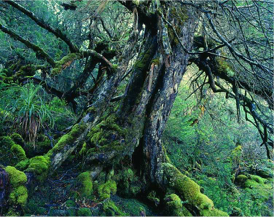Giving future Australian drought a 500-year perspective
Here at Intrepid Science we focus a lot of effort on trying to better reconstruct past climate and environmental change. The main reason is that by understanding what happened when in the recent geologic record we can reduce the uncertainties surrounding future climate change and its impact(s). But don’t be misled by the term ‘geologic record’. Basically we’re looking beyond the historic record of scientific observations by reading what’s preserved in the landscape – what are sometimes described as ‘natural archives’. Nature has a fabulously diverse library and can include trees, corals and even ice cores. The real test is finding these ‘books’. As a result, the team work around the world unearthing new records.
One of our most recent projects is to reconstruct changing drought across eastern Australia and New Zealand over the last 500 years. When Australia experiences a drought, it can cause billions of dollars of environmental and economic damage. A classic example is the ‘Millennium Drought’ of the late 1990s-2009 when the shortage of rain caused fires across southeastern Australia that included the ‘Black Saturday’ fires that tragically claimed 173 lives and cost an estimated US$3 billion. Climate doesn’t get much more extreme than in Australia. By using tree ring records of growing conditions – which are strongly influenced by the amount of moisture available for growth – and corals that preserve a record of river flow off the Queensland interior, we have developed an atlas of drought: a year-by-year map of wet-dry conditions resolved at 0.5˚ latitude by 0.5˚ longitude. We previously reported the drought atlas at the end of last year (you can download the original paper for free at http://iopscience.iop.org/article/10.1088/1748-9326/10/12/124002. If you’re interested, the 500 years has been compressed into a 2 minute movie at https://www.youtube.com/watch?v=9w-xzhQoyUY).
Now, the brilliant Ben Cook at +NASA and a fantastic team has interrogated the atlas and compared how past droughts compare to climate projections for the twenty-first century. The paper is called ‘The paleoclimate context and future trajectory of extreme summer hydroclimate in eastern Australia’ and can be found at http://onlinelibrary.wiley.com/doi/10.1002/2016JD024892/abstract. For the period of overlap, the models do a good job capturing our reconstructed droughts. Looking forward there’s a worrying trend: average conditions in eastern Australia are expected to become drier during the latter half of the 21st century, with a greater risk of extremes similar to the Millennium Drought. Multi-year droughts look like they will become increasingly common in the future as a result of both natural variations and anthropogenic forcing. A major implication is we need to future proof Australia as much as possible against the increasing likelihood of similar events occurring over the next century.
This work was funded by the Australian Research Council (ARC) and we gratefully acknowledge their support.
One of our most recent projects is to reconstruct changing drought across eastern Australia and New Zealand over the last 500 years. When Australia experiences a drought, it can cause billions of dollars of environmental and economic damage. A classic example is the ‘Millennium Drought’ of the late 1990s-2009 when the shortage of rain caused fires across southeastern Australia that included the ‘Black Saturday’ fires that tragically claimed 173 lives and cost an estimated US$3 billion. Climate doesn’t get much more extreme than in Australia. By using tree ring records of growing conditions – which are strongly influenced by the amount of moisture available for growth – and corals that preserve a record of river flow off the Queensland interior, we have developed an atlas of drought: a year-by-year map of wet-dry conditions resolved at 0.5˚ latitude by 0.5˚ longitude. We previously reported the drought atlas at the end of last year (you can download the original paper for free at http://iopscience.iop.org/article/10.1088/1748-9326/10/12/124002. If you’re interested, the 500 years has been compressed into a 2 minute movie at https://www.youtube.com/watch?v=9w-xzhQoyUY).
 |
| Australian trees preserve a year-by-year record of drought |
Now, the brilliant Ben Cook at +NASA and a fantastic team has interrogated the atlas and compared how past droughts compare to climate projections for the twenty-first century. The paper is called ‘The paleoclimate context and future trajectory of extreme summer hydroclimate in eastern Australia’ and can be found at http://onlinelibrary.wiley.com/doi/10.1002/2016JD024892/abstract. For the period of overlap, the models do a good job capturing our reconstructed droughts. Looking forward there’s a worrying trend: average conditions in eastern Australia are expected to become drier during the latter half of the 21st century, with a greater risk of extremes similar to the Millennium Drought. Multi-year droughts look like they will become increasingly common in the future as a result of both natural variations and anthropogenic forcing. A major implication is we need to future proof Australia as much as possible against the increasing likelihood of similar events occurring over the next century.
This work was funded by the Australian Research Council (ARC) and we gratefully acknowledge their support.


Comments
Post a Comment